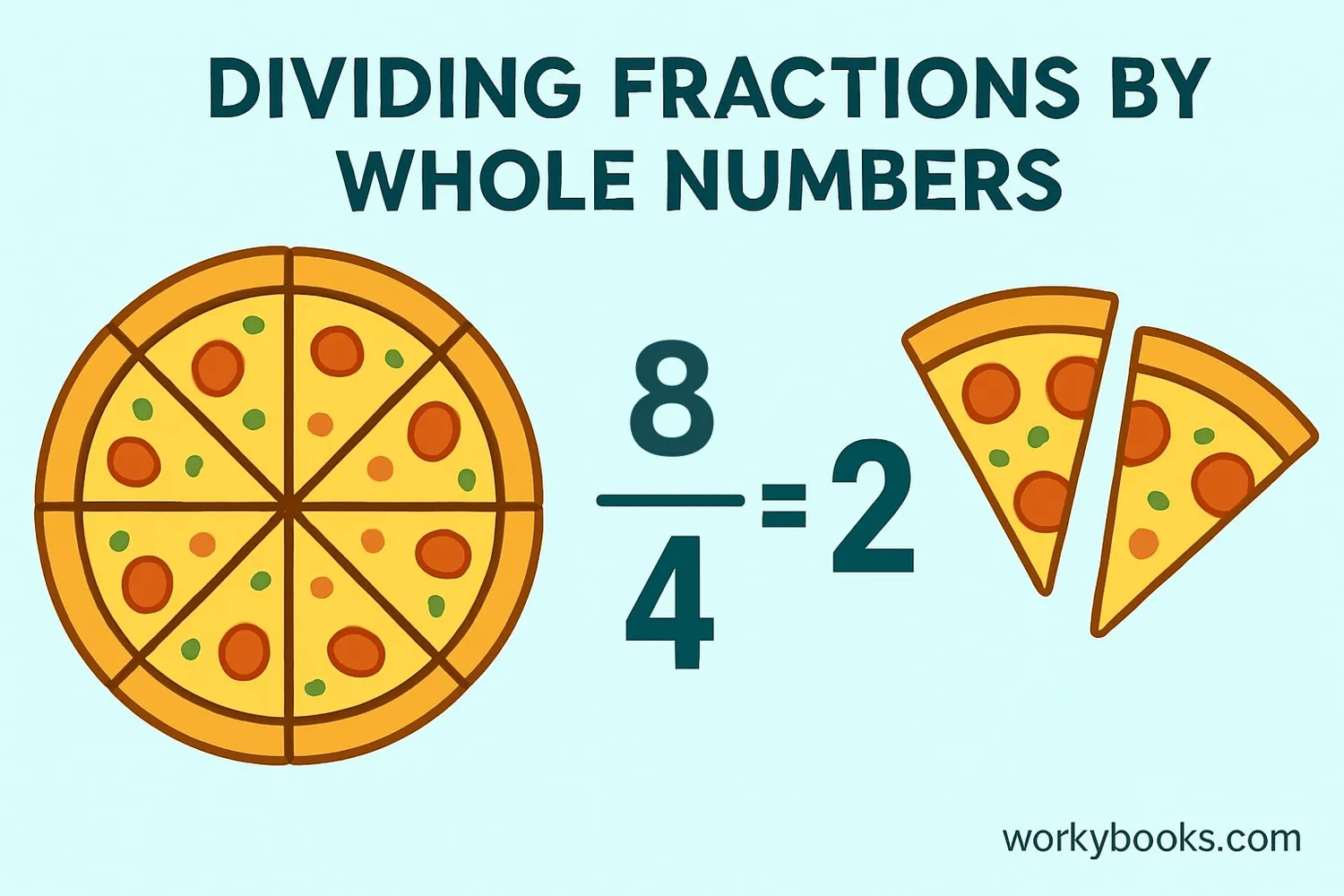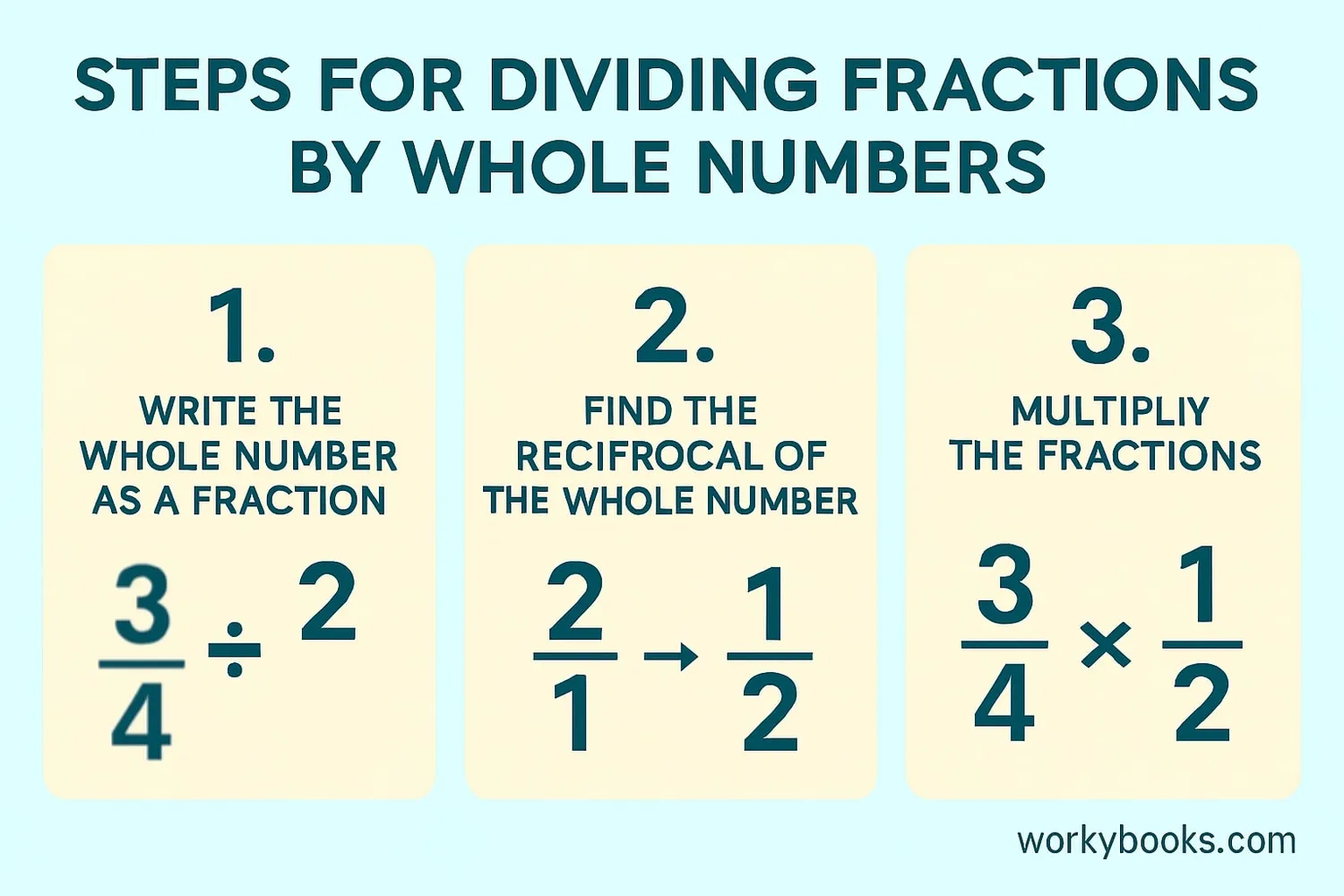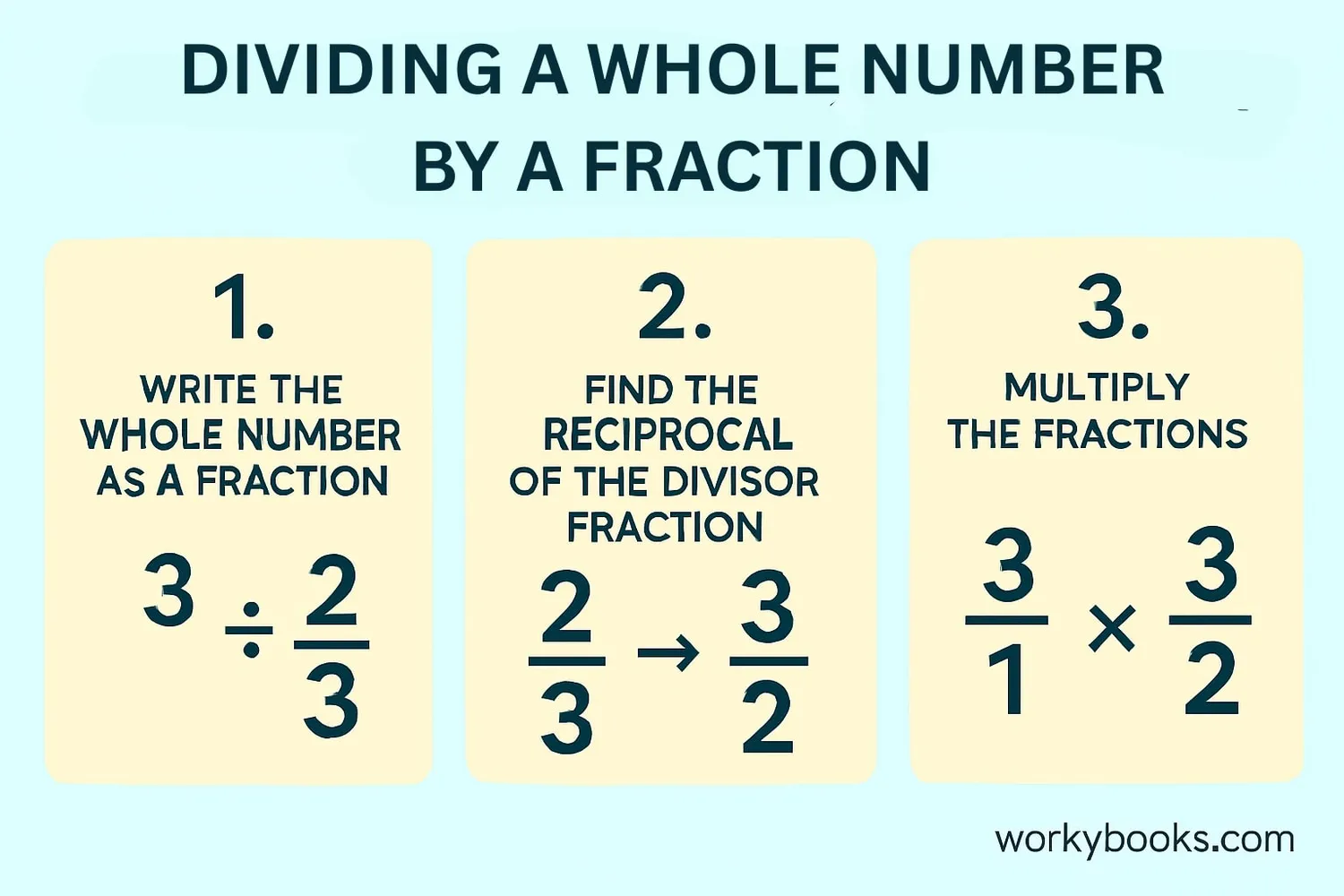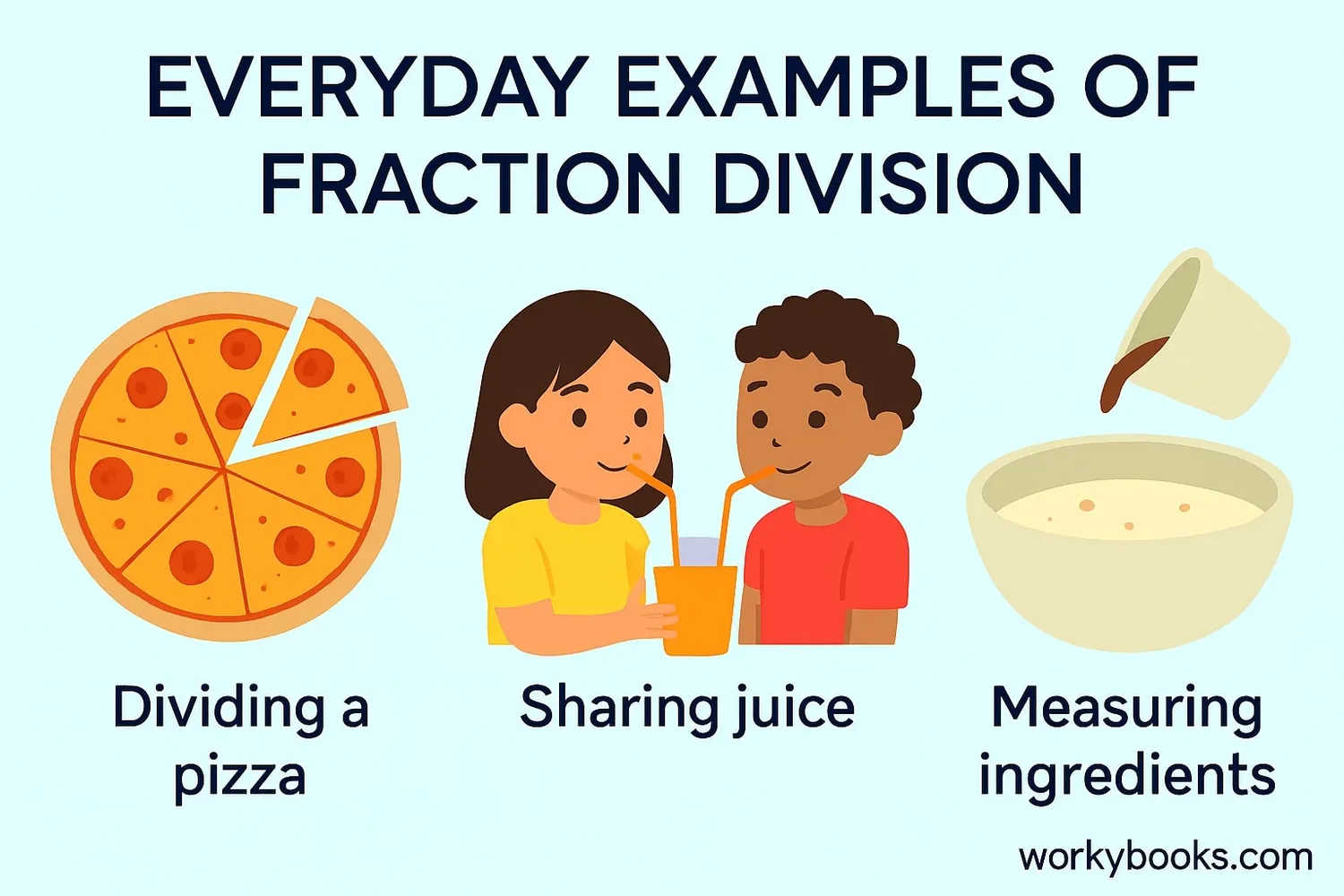Dividing Fractions with Whole Numbers - Definition, Examples, Quiz, FAQ, Trivia
Learn to divide fractions by whole numbers and whole numbers by fractions with visual examples and practice activities
What is Division of Fractions?

Division of fractions with whole numbers is a mathematical operation where we either:
1. Divide a fraction by a whole number
2. Divide a whole number by a fraction
Understanding this concept helps us solve real-world problems like sharing food equally among friends or dividing materials into specific portions.
The key to dividing fractions is understanding the concept of the reciprocal. The reciprocal of a number is what we multiply that number by to get 1. For fractions, we simply flip the numerator and denominator.
Key Concept
Dividing by a number is the same as multiplying by its reciprocal. This is the foundation for all fraction division.
Dividing a Fraction by a Whole Number

When dividing a fraction by a whole number, we follow these steps:
Any whole number can be written as a fraction with 1 as the denominator. For example, 3 becomes ³⁄₁.
The reciprocal of a fraction is created by flipping the numerator and denominator. For ³⁄₁, the reciprocal is ⅓.
Multiply the original fraction by the reciprocal of the whole number.
Conversion Formula
To divide any fraction by a whole number, multiply the fraction by the reciprocal of the whole number.
Step 1: Write 2 as a fraction: ²⁄₁
Step 2: Find the reciprocal of ²⁄₁: ½
Step 3: Multiply: ¾ × ½ = (3×1)/(4×2) = ³⁄₈
So, ¾ ÷ 2 = ³⁄₈
Remember
When you divide a fraction by a whole number, the result will be smaller than the original fraction.
Dividing a Whole Number by a Fraction

When dividing a whole number by a fraction, we follow these steps:
Write the whole number with 1 as the denominator. For example, 4 becomes ⁴⁄₁.
The divisor is the fraction we're dividing by. Flip its numerator and denominator to find its reciprocal.
Multiply the whole number (written as a fraction) by the reciprocal of the divisor fraction.
Conversion Formula
To divide any whole number by a fraction, multiply the whole number by the reciprocal of the fraction.
Step 1: Write 5 as a fraction: ⁵⁄₁
Step 2: Find the reciprocal of ½: ²⁄₁ (which is 2)
Step 3: Multiply: ⁵⁄₁ × ²⁄₁ = (5×2)/(1×1) = ¹⁰⁄₁ = 10
So, 5 ÷ ½ = 10
Remember
When you divide a whole number by a fraction, the result will be larger than the original whole number.
Real-World Examples

Let's practice division with some real-world examples:
Example 1: Maria has ¾ of a pizza and wants to share it equally with her 2 friends. How much pizza will each person get?
Solution: ¾ ÷ 3 = ¾ × ⅓ = (3×1)/(4×3) = ³⁄₁₂ = ¼
Each person gets ¼ of a pizza.
Example 2: A recipe calls for ½ cup of sugar. How many batches can you make with 4 cups of sugar?
Solution: 4 ÷ ½ = 4 × ²⁄₁ = 8
You can make 8 batches.
Example 3: A rope is ⅖ meters long. It is cut into 4 equal pieces. How long is each piece?
Solution: ⅖ ÷ 4 = ⅖ × ¼ = (2×1)/(5×4) = ²⁄₂₀ = ⅒
Each piece is ⅒ meters long.
Example 4: How many ¾ cup servings are in 6 cups of juice?
Solution: 6 ÷ ¾ = 6 × ⁴⁄₃ = (6×4)/(1×3) = ²⁴⁄₃ = 8
There are 8 servings.
Practice Tip
Look for opportunities to practice fraction division in daily life - when cooking, sharing snacks, or doing crafts!
Fraction Division Practice Quiz
Test your fraction division skills with this 5-question quiz. Choose the correct answer for each question.
Frequently Asked Questions
Here are answers to common questions about dividing fractions with whole numbers:
Math Trivia
Discover interesting facts about fractions and mathematics:
Ancient Fractions
The ancient Egyptians used fractions as early as 1800 BC. They primarily used unit fractions (fractions with 1 as the numerator) and would express other fractions as sums of unit fractions.
Fractions in Nature
Fractions appear throughout nature! The patterns of leaves on a stem, the arrangement of seeds in a sunflower, and the spiral of a nautilus shell all follow mathematical sequences that can be described using fractions.
Fractions in Music
Musical rhythms are based on fractions. A whole note gets 4 beats, a half note gets 2 beats, a quarter note gets 1 beat, and an eighth note gets ½ beat. Musicians use fractions to read and play music accurately.
The Importance of Fractions
Understanding fractions is one of the most important predictors of success in higher mathematics. Students who master fractions by middle school are much more likely to succeed in algebra and advanced math courses.


